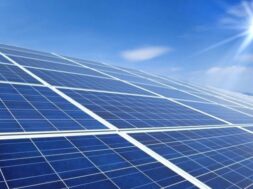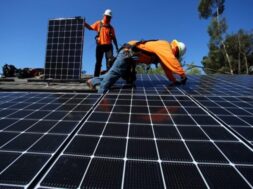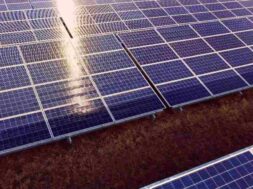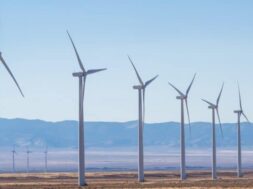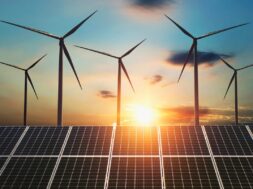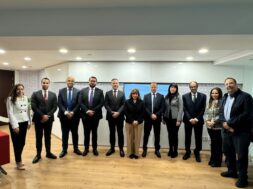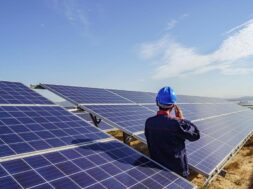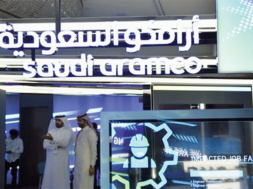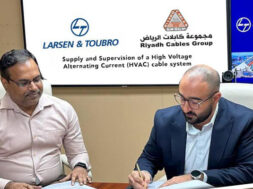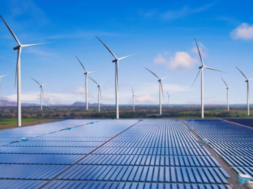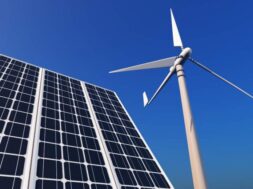
Solar power in the Middle East: how some countries are racing to go green – EQ Mag Pro
A rapidly heating world has driven governments in the region to adopt ambitious clean energy plans
The Middle East has had another scorching summer, with several of the world’s hottest urban areas recording sustained temperatures above 50°C.
Electricity providers are working flat out to ensure power stations remain operable — not only to keep the lights on, but for everything from air conditioning to sewage treatment, seawater desalination and industry.
Vast quantities of oil, gas and coal are burnt to power the region, with half of the electricity consumption going to residential use, driven largely by air conditioning.
But increasingly, solar is muscling in.
Experts tell The National that the growing adoption of solar power could take the edge off the challenge of keeping the AC running when temperatures soar, which currently threatens some of the most vulnerable communities in the region.
In Iraq, the peak in electricity demand during the summer has long been a serious problem. Usage rises from around 22.6 gigawatts (GW) in winter to up to 34.8GW in summer — almost 12GW above what the country can produce, meaning blackouts are common.
Those who cannot afford backup generators have to suffer — and often take to the streets to protest.
Because Iraq’s rising annual demand has rapidly outpaced supply, in part due to rapid population growth, the country serves as a warning to other states whose demand is also rising steadily.
Experts say solar could help ― it is cost-competitive, it is quicker to install and can be deployed either at scale for large communities, or in a modular way on rooftops, or for small factories.
The energy giants
Some Middle East countries have a natural advantage when it comes to meeting power demand, harnessing their massive wealth of natural resources.
Saudi Arabia, which uses some of its oil and gas reserves in thermal power stations, has seen summer demand surge to 64GW — even though the country’s population is about five million smaller than Iraq’s.
The kingdom has spare capacity, theoretically able to produce up to 90GW, some of which supplies a regional power grid, the Gulf Cooperation Council Interconnection Grid.
Saudi Arabia could even supply Iraq, and plans are under way to that effect.
But analysts say there are no silver bullets and that green energy adoption, alongside raising tariffs for consumers from reducing subsidies, are key strategies.
Solar cities
In the oil-exporting states, going green with large-scale solar projects can save hydrocarbons currently being burnt in thermal power stations.
While many of the Middle East’s major oil exporters have used the windfall to build infrastructure such as power stations, Iraq and Libya are countries that have suffered decades of conflict and corruption that have left the electricity sector old and crumbling.
Clean energy in Iraq is still in its infancy, in part due to the absence of tried and tested projects. Every new project in Iraq faces high uncertainty due to a challenging investment environment, which includes political volatility.
Iraq has ambitious solar power plans under way, with four power plants to be developed by the UAE’s Masdar, totalling 1GW when complete. The ministry of electricity in Baghdad says that negotiations for the cost of the power produced are ongoing.
For the big oil importers such as Tunisia, Jordan, Egypt and Lebanon — facing rising energy costs as global oil prices spike, transitioning to clean energy could mean the difference between economic disaster or sustainable growth.
Some are racing ahead, including UAE, Morocco and Egypt, which currently lead the region in installed solar. Others have set no limits to their ambitions, with Saudi Arabia’s new city development Neom aiming to be the world’s first city entirely powered by renewables, in particular solar.
In Jordan, the use of solar is also growing — a critical factor in the energy mix of a country that will need to increase power generation at a rate of 4-5 per cent a year, largely due to a rising population. Iraq, however, needs to boost generation by as much as 10 per cent a year.
Solar strategy
Jordan aims to increase renewable generation — mainly solar power — to 3.2GW by 2025, with a current peak demand of around 3.5GW. That would put the kingdom close to regional solar leaders Egypt, Morocco and the UAE.
Many other countries in the region have ambitious plans to increase renewable energy generation.
Between 2015 and 2020, the UAE increased renewable power generation over 18 times from 136MW to 2,540MW. It is also looking at some of the world’s biggest renewable projects, including the Mohammed bin Rashid Al Maktoum Solar Park which could be the largest ever built and generate up to 5GW.
That one power station alone would more than double Lebanon’s entire fossil fuel-based electricity production.
“The main power plants in Lebanon, Zahrani and Deir Ammar, both run on gas oil. But given the country’s financial situation, the national electricity company produces statements saying ‘we are running out of fuel,’ which means one of the plants won’t be able to run. So basically what they’re offering these days is a couple of hours. So knowing that demand is 3,000 megawatts, they sometimes have only half of that to provide to their own citizens,” Noam Raydan, a regional energy consultant tells The National.
Rooftop solar
“In Lebanon, people are relying on private generator providers, who are also taking advantage of the situation and raising fees and a lot of people just can’t afford it. One family I know along the border of Syria decided to invest in rooftop solar panels. It’s a bit expensive, but they just can’t take it any more. Because in that village on the border, they’re just not getting electricity at all,” Ms Raydan says.
In May, Lebanon licensed about 10 companies to build 10MW solar power plants — each enough to power at least 10,000 homes.
But some analysts note that powerful lobbies connected to generator providers are against solar projects. This has also delayed the creation of a legislative framework for solar installation at the national level. But there are other challenges too.
“Rooftop solar cannot cover 100 per cent of needs. But it can contribute perhaps 15 per cent. Especially with Arab architecture where roofs are mostly flat,” says Olivier Drucke, a specialist in solar power in the Middle East.
He tells The National that energy-intensive air conditioning is the challenge but stresses that the “beauty of solar is that it is modular” and can be used in many different circumstances, taking pressure off the bigger power stations.
Mr Drucke says the region is split between Gulf States, as well as Egypt and Morocco, preparing for massive investment in utility-scale solar, and countries that are trailing behind the green revolution.
“In the case of the Gulf States, since they’re organised in a rather centralised way, I think very big capacities in the desert are a good idea,” Mr Drucke says.
He points to deep structural problems in countries such as Iraq and Lebanon, which are plagued by factionalism, a legacy of decades of social division.
Mr Drucke says Iraq and Lebanon increasingly struggle to subsidise cheap electricity for the public. Implementing tariff reform to ensure new investment has been one of the biggest challenges because higher bills are politically unpopular.
The Lebanese government has to subsidise the state power operator to the tune of $1-1.5bn a year as bills do not cover the cost of the generation. However, successive governments have insisted that they need to be able to provide reliable power before they can ask people to pay more.
One thing that could mitigate this challenge, Mr Drucke says, is higher adoption by the private sector and public of rooftop solar, or small solar power grids known as microgrids.
But he warns such an approach is best supported by a strong private sector because communities would be empowered to choose from competing providers. Such a situation is currently missing in countries including Iraq, Tunisia and Lebanon.
“At the end of the day, the entrepreneurial culture needs to be supported, so that they have a chance to develop an alternative to this state-driven system,” he says.
Microgrids are a new frontier and many places don’t have the legislation in place to manage them.
He adds that a political system that favours state control could view a growing entrepreneurial class as a challenge rather than an opportunity.
“In the energy sector, the conflict is obviously in the neighbourhood, with diesel generators where people are ripped off, because there are local monopolies that take the money from the people because they can. I think the situation there is stuck presently, it’s very difficult to imagine how they can make it work.”
Ms Raydan points to “super powerful” local generator providers in Iraq and Lebanon who have a grip on the sector.
But this is only a secondary problem, she warns ― at the government level, deep corruption, where political parties use ministries to raise funds and a failure to understand energy markets is hampering growth.
For now, structural problems are a bigger challenge than whether the countries adopt solar, wind or other green technology.
For the Gulf States ― and those able to reform tariffs to create new investment in power, such as Egypt, the future is brighter.
But Mr Drucke says, despite his passion for solar, the long-term needs of these countries on the front line of climate change will need a strong mix of energy solutions to beat the challenge of rising demand.
“They have to have everything together. And they’re already using everything actually, including nuclear,” he says, referring to the UAE’s Barakah nuclear power plant.
“The future is a big, big energy mix.”
